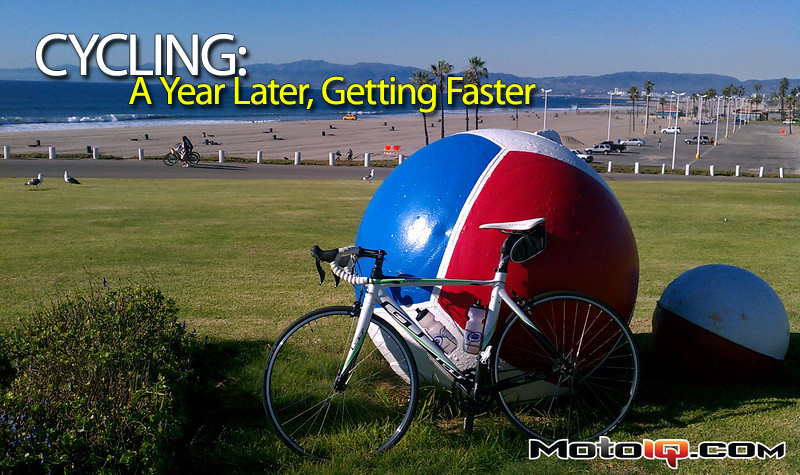
Cycling: A Year Later, Getting Faster
Khiem Dinh is an engineer for Honeywell Turbo Technologies at the time of this writing. All statements and opinions expressed by Khiem Dinh are solely those of Khiem Dinh and not reflective of Honeywell Turbo Technologies.
Last year was my foray into getting somewhat serious about cycling. I’ve been riding a bicycle since I was four and did a bit of mountain biking through high school and college. I never used cycling as a method of training however; it was always just for fun. Last year, I decided to get a bit more serious about it and invest in appropriate gear with the end goal of being more fit for motorsports. Just as with motorsports, data is king. Just as with motorsports, you want to make it out alive, so safety is a top priority.
The cool thing about modern technology is just how accessible it makes getting and storing data to aid in training. The goal of training is to get better of course and having data to back it up is always good. Just like datalogging a race car on the track, you can datalog your cycling. Better yet, you can do it for free! With me being a cheap bastard, I have used Strava as my tool of choice to track my progress. The primary parameters I look at are distance, elevation, power output, and calories burned.
 This is the page showing your basic ride stats along with a map of your ride.
This is the page showing your basic ride stats along with a map of your ride. There are a couple different ways to view your log of rides and this is one of them. Yeah, with the short days this time of year, I’m only getting in one ride a week.
There are a couple different ways to view your log of rides and this is one of them. Yeah, with the short days this time of year, I’m only getting in one ride a week.If you want to datalog your actual power output, you can buy the electronics that measure your torque into the cranks directly. Or, you can be a cheap bastard like me and just use the free estimated power output parameter calculated by Strava. Is it accurate? Sorta and no. Looking at a graph of the power output calculated by Strava, the chart jumps all over the place. Therefore, I only look at the average power output. Is the average power output value calculated by Strava accurate? Sorta… It cannot take into account wind conditions which greatly affect your power output on the bike. I’m guessing Strava uses a relatively simple model that takes into account your weight, an estimated aero drag, an estimated rolling drag, and elevation changes to calculate power output; so pretty basic physics. Throw in wind and/or drafting and the power value will be completely off. Is the Strava power calculation model precise? Sure thing! If you want accurate and precise, buy a power meter for your bicycle and datalog to your heart’s content. Oh yeah, you can get a heart rate monitor and datalog that too. Maybe I’ll step up to that next year, but for right now I’m content with just listening to what my body is telling me for exertion level.

 A year and a half on and I'm going faster and farther.
A year and a half on and I'm going faster and farther.So how am I doing towards my goal of getting fitter and therefore better at motorsports? When I first started cycling on the road bike about a year and a half ago, I would do about 15 miles with 1000ft of elevation gain at an average power output in the 100-110 watts range (according to freebie Strava). Half a year after that, I was doing 30 miles with about 2000ft of elevation at an average power output in the 110-120 watts range. A half year after that, I was in the 120-130 watts range. My typical ride is still in the 20-30 mile range with upwards of 2400ft of elevation gain, but my power output is consistently in the 130-140 watts range now. Yup, I’m getting stronger.



